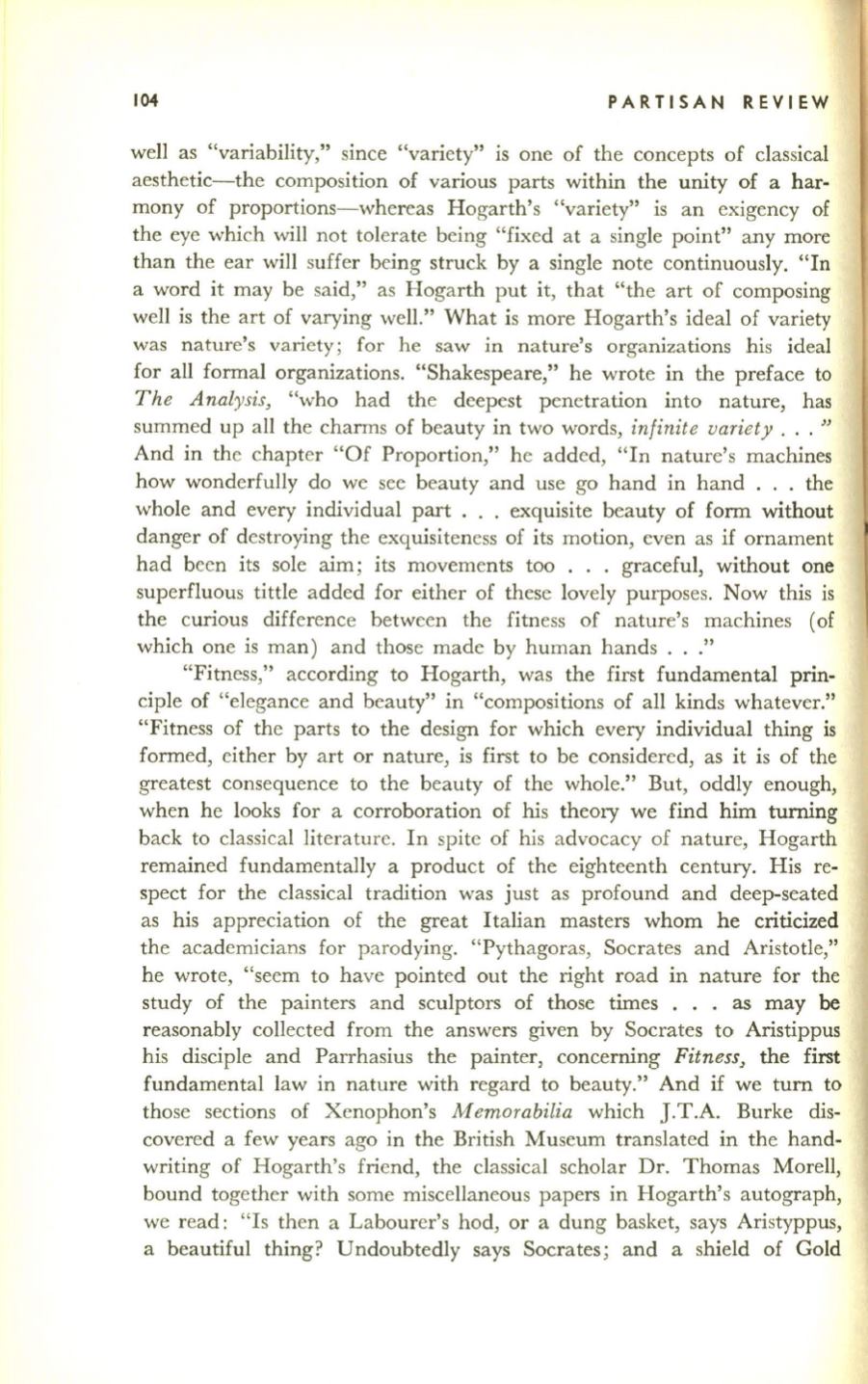
104
PARTISAN REVIEW
well as "variability," since "variety" is one of the concepts of classical
aesthetic-the composition of various parts within the unity of a har–
mony of proportions-whereas Hogarth's "variety" is an exigency of
the eye which will not tolerate being "fixed at a single point" any more
than the ear will suffer being struck by a single note continuously. "In
a word it may be said," as Hogarth put it, that "the art of composing
well is the art of varying well." What is more Hogarth's ideal of variety
was nature's variety; for he saw in nature's organizations his ideal
for all formal organizations. "Shakespeare," he wrote in the preface to
The Analysis,
"who had the deepest penetration into nature, has
summed up all the charms of beauty in two words,
infinite variety .
.. "
And in the chapter "Of Proportion," he added, "In nature's machines
how wonderfully do we see beauty and use go hand in hand . . . the
whole and every individual part . . . exquisite beauty of form without
danger of destroying the exquisiteness of its motion, even as if ornament
had been its sole aim; its movements too . . . graceful, without one
superfluous tittle added for either of these lovely purposes. Now this is
the curious difference between the fitness of nature's machines (of
which one is man) and those made by human hands ..."
"Fitness," according to Hogarth, was the first fundamental prin–
ciple of "elegance and beauty" in "compositions of all kinds whatever."
"Fitness of the parts to the design for which every individual thing is
formed, either by art or nature, is first to be considered, as it is of the
greatest consequence to the beauty of the whole." But, oddly enough,
when he looks for a corroboration of his theory we find him turning
back to classical literature. In spite of his advocacy of nature, Hogarth
remained fundamentally a product of the eighteenth century. His re–
spect for the classical tradition was just as profound and deep-seated
as his appreciation of the great Italian masters whom he criticized
the academicians for parodying. "Pythagoras, Socrates and Aristotle,"
he wrote, "seem to have pointed out the right road in nature for the
study of the painters and sculptors of those times . . . as may
be
reasonably collected from the answers given by Socrates to Aristippus
his disciple and Parrhasius the painter, concerning
Fitness,
the first
fundamental law in nature with regard to beauty." And if we turn to
those sections of Xenophon's
Memorabilia
which J.T.A. Burke dis–
covered a few years ago in the British Museum translated in the hand–
writing of Hogarth's friend, the classical scholar Dr. Thomas Morell,
bound together with some miscellaneous papers in Hogarth's autograph,
we read: "Is then a Labourer's hod, or a dung basket, says Aristyppus,
a beautiful thing? Undoubtedly says Socrates; and a shield of Gold


